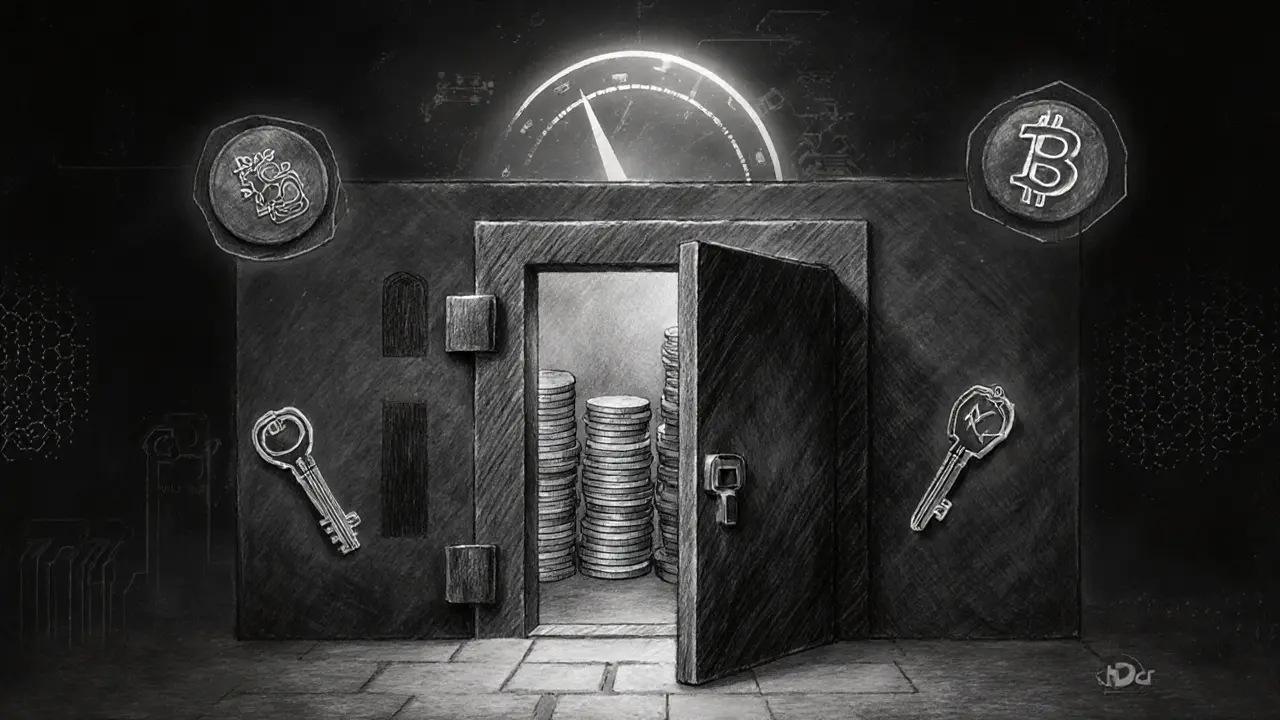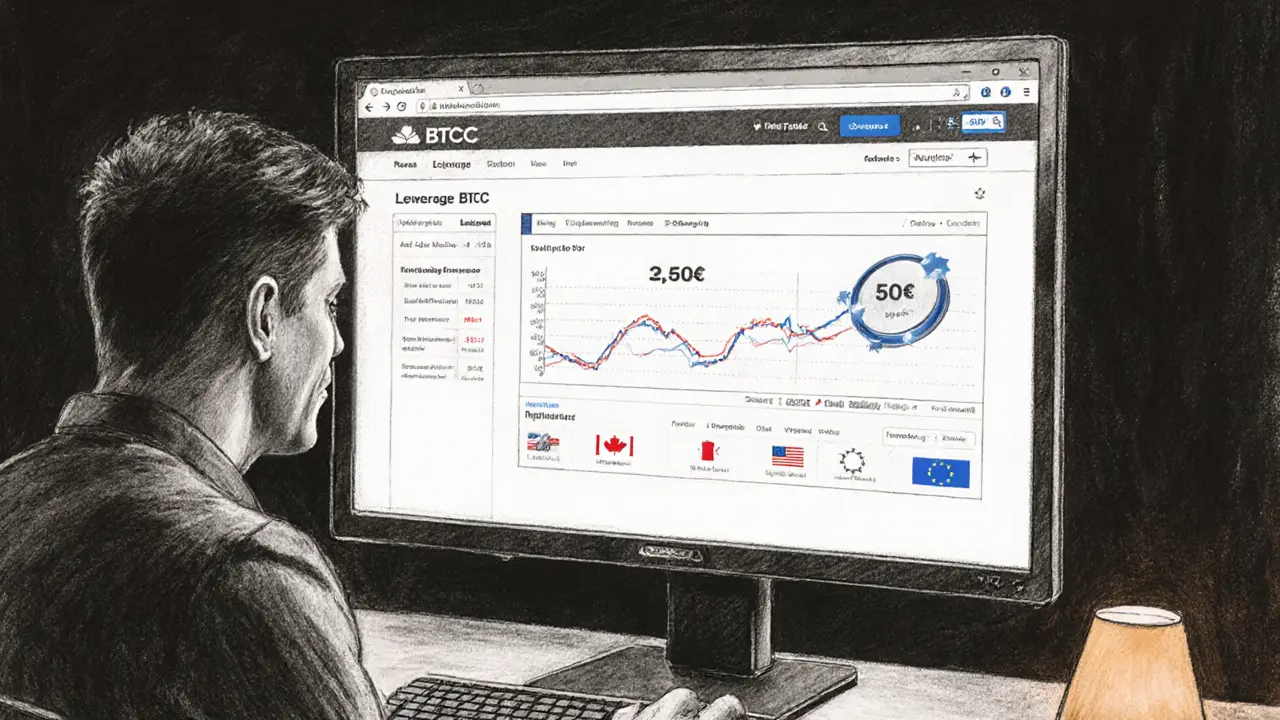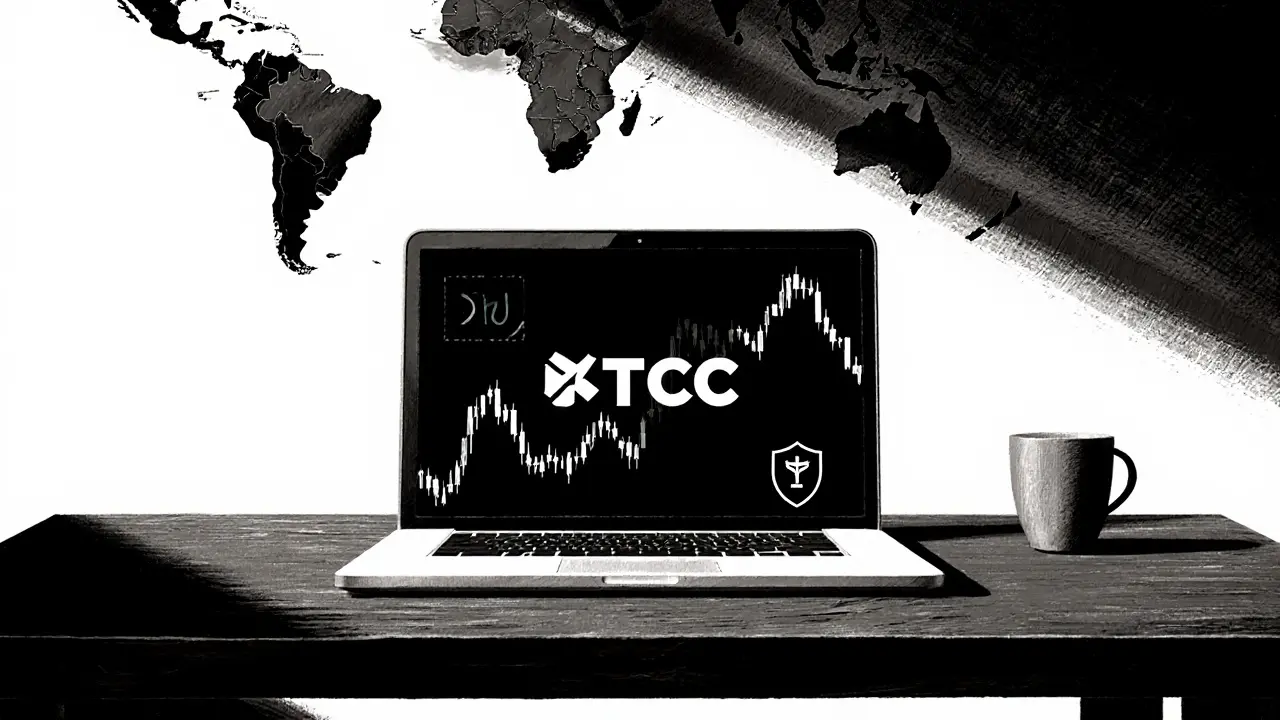BTCC Fee Calculator
Estimated Trading Cost
BTCC Fee Structure Overview
Spot Trading: Maker: 0.2%, Taker: 0.3%
Futures Trading: Maker: 0.02%, Taker: 0.05%
VIP Discounts: Up to 50% off fees for high-volume traders
Minimum Deposit: $10
When you hear the name BTCC, you’re hearing about a platform that has survived every market crash, regulatory wave, and hype cycle since 2011. That kind of longevity is rare in crypto, where most exchanges fade after a year or two. This review breaks down exactly what makes BTCC tick in 2025 - from its fee schedule and leverage options to its security track record and regulatory footprint - so you can decide whether it earns a spot in your trading toolbox.
Quick Take
- Founded in 2011, over 10million registered users worldwide.
- Zero hacks or breaches; reserve ratio consistently above 140%.
- Spot fee: 0.2% maker / 0.3% taker; futures fee similar.
- Leverage up to 500× on futures - among the highest in the market.
- Regulated in Canada (FINTRAC), USA (FinCEN) and Europe; supports direct CAD deposits.
- 360+ crypto assets, 350+ spot pairs, 380+ futures pairs.
- Pros: security, compliance, high leverage, CAD support. Cons: lower liquidity on niche pairs, fewer assets than Binance.
What Is BTCC?
BTCC is a cryptocurrency exchange that started as Bitcoin China in 2011 and has evolved into a globally regulated platform serving over 10million users. Founded by Bobby Lee, the exchange grew from China’s first Bitcoin marketplace into a multi‑jurisdictional service offering spot trading, futures contracts, and copy‑trading tools across more than 360 digital assets.
Security: The Core Differentiator
BTCC’s claim of a “perfect security record” isn’t just marketing fluff. The platform stores the bulk of user funds in multi‑signature cold wallets, keeping operational funds separate. Its 1:1 storage ratio means every user token is fully backed - no collateralizing user assets for loans, which many rivals do.
Quarterly Proof‑of‑Reserves reports confirm the health of the balance sheet. The September2025 report showed a total reserve ratio of 143%, with individual ratios well above 100% for major coins (BTC111%, ETH152%, USDC121%). This cushion protects users during market turmoil and reinforces the exchange’s claim of zero successful hacks since inception.
Regulatory Footprint
Compliance is a key reason institutional traders trust BTCC. The exchange holds active licenses with:
- FINTRAC in Canada, enabling direct CAD deposits via Visa and Mastercard.
- FinCEN in the United States, ensuring AML/KYC standards meet U.S. expectations.
- European regulatory bodies (specific licences vary by country), giving European users a regulated gateway to crypto trading.
This tri‑continental compliance sets BTCC apart from many Asian‑focused exchanges that operate with limited licensing.
Trading Products and Features
BTCC offers three core product lines:
- Spot Trading: Over 350 spot pairs, including BTC, ETH, DOGE, SOL, XRP, and SHIB. The platform processes roughly $41billion in spot volume in the first half of September2025.
- Futures Trading: More than 380 perpetual contracts, with leverage ranging from 1× up to a staggering 500×. This is higher than most competitors - MEXC caps at 400×, Coinbase at 20×, and Kraken at 40×.
- Copy Trading: Users can follow successful traders, a feature that appeals to newcomers who want to replicate proven strategies without deep market analysis.
All products come with built‑in risk‑management tools such as liquidation warnings, margin calculators, and stop‑loss orders, which are essential given the high leverage on futures.

Fee Structure
BTCC’s fees are straightforward and competitive:
- Spot maker: 0.2%
- Spot taker: 0.3%
- Futures maker: 0.02% (often discounted for high‑volume traders)
- Futures taker: 0.05%
- No minimum deposit - users can start with as little as $10.
Compared with Binance’s 0.1% maker fee (with BNB discounts) and Coinbase’s 0.5% taker fee, BTCC lands in the sweet spot for both casual and high‑frequency traders.
Liquidity and Trading Volume
The exchange’s September2025 data shows $41billion in spot trading and $315billion in futures trading in just the first two weeks. While this positions BTCC in the top‑10 exchanges by volume on CoinMarketCap and CoinGecko, it still trails industry giants on niche pairs. For high‑liquidity assets like BTC/USD, spreads are tight, but less‑traded altcoins may see slightly wider spreads than on Binance.
Pros and Cons - A Balanced View
| Feature | BTCC | Binance | Coinbase | MEXC |
|---|---|---|---|---|
| Founded | 2011 | 2017 | 2012 | 2018 |
| Regulated (US/CA/EU) | Yes | Partial | Yes (US) | No |
| Spot Pairs | 350+ | 600+ | 150+ | 300+ |
| Futures Pairs | 380+ | 600+ | 50+ | 250+ |
| Max Leverage | 500× | 125× | 20× | 400× |
| Spot Taker Fee | 0.3% | 0.1% (with BNB) | 0.5% | 0.2% |
| Security Record | No hacks | No major hacks | No major hacks | No major hacks |
In short, BTCC shines in compliance, security, and ultra‑high leverage, while Binance still leads on sheer asset variety and Binance’s fee discounts may be preferable for massive traders.
Getting Started: Onboarding Steps
- Visit the official BTCC website and click “Sign Up”.
- Enter your email, create a strong password, and confirm the verification code.
- Complete KYC - upload a government‑issued ID and a selfie for facial verification. This satisfies FINTRAC, FinCEN, and EU AML requirements.
- Choose a funding method. Canadian users can fund instantly with CAD via Visa/Mastercard or ACH bank transfer. International users can deposit fiat through SWIFT or crypto deposits.
- Enable two‑factor authentication (2FA) in the security settings for added protection.
- Navigate to the “Spot” or “Futures” tab, select a trading pair, and place your first order. New users may start with a $50 test trade before scaling up.
The platform also offers an educational hub with videos on futures risk, leverage calculators, and a demo mode for paper trading.
Potential Risks and Mitigation
High leverage (up to 500×) can amplify gains but also blow out positions in seconds. BTCC mitigates this risk with real‑time liquidation alerts, auto‑margin calls, and a mandatory maintenance margin that kicks in before a full liquidation occurs. Beginners should start with low leverage (1‑5×) and use stop‑loss orders.
Liquidity on smaller altcoins can be thin, leading to slippage. If you plan to trade less popular pairs, consider splitting orders or using limit orders to control execution price.
Final Verdict
If you value a regulated environment, an unbeaten security record, and the ability to trade ultra‑high‑leverage futures, BTCC deserves a prominent place in your portfolio. Its fee structure is competitive, especially for spot traders, and the CAD‑friendly onboarding makes it a top choice for Canadian residents. The main trade‑off is a narrower asset list compared to Binance, and occasional liquidity gaps on obscure tokens. Overall, BTCC offers a balanced mix of institutional‑grade safety and retail‑friendly features that few other exchanges match.

Frequently Asked Questions
Is BTCC safe to use?
Yes. BTCC has never suffered a successful hack, stores assets in multi‑signature cold wallets, and maintains a total reserve ratio above 140% as shown in its quarterly Proof‑of‑Reserves reports.
What is the maximum leverage on BTCC futures?
The platform offers up to 500× leverage on selected perpetual contracts, which is among the highest in the industry.
Does BTCC support fiat deposits?
Yes. Canadian users can deposit directly in CAD via Visa, Mastercard, or bank transfer. International users can use USD, EUR, or crypto deposits.
How do BTCC’s fees compare to other exchanges?
Spot fees are 0.2% maker and 0.3% taker, slightly higher than Binance’s 0.1% maker fee (with BNB discounts) but lower than Coinbase’s 0.5% taker fee. Futures fees are 0.02% maker and 0.05% taker, competitive across the market.
Can I copy trade on BTCC?
Yes, BTCC provides a copy‑trading feature that lets you follow top traders and automatically replicate their positions.


BTCC's fees are a joke, avoid it!
The BTCC exchange certainly tries to position itself as a user‑friendly platform, but there are several nuances worth dissecting.
First, the fee schedule appears straightforward at a glance, yet the tiered structure can catch newcomers off‑guard when they suddenly hit a higher taker rate.
For regular traders, the 0.3 % taker fee might seem modest, but when you factor in the spread and potential withdrawal costs, the effective cost rises.
VIP discounts, although attractive, require a substantial trading volume that many retail users simply cannot achieve.
Moreover, the minimum deposit of $10 is low, but the exchange’s KYC process can be surprisingly rigorous for such a small entry point.
Security-wise, BTCC boasts cold‑storage for the majority of assets, yet past incidents in the broader crypto space remind us that no platform is immune to breaches.
Their two‑factor authentication is a solid baseline, but I would also recommend using a hardware security key for added protection.
On the trading front, the spot market maker rate of 0.2 % is competitive, but the futures taker fee of 0.05 % is where the exchange really shines for high‑frequency traders.
If you’re a day trader, the sub‑0.1 % fees can translate into sizable savings over time, provided you stay within the margin limits.
Liquidity, however, can be patchy on less popular pairs, leading to slippage that erodes the nominal fee advantage.
Customer support is responsive during business hours, but the lack of 24/7 live chat might be a deal‑breaker for those operating across time zones.
The user interface is clean and intuitive, though power users may miss advanced charting tools that are standard on rival platforms.
In terms of regulatory compliance, BTCC aligns with several jurisdictions, yet the ever‑changing legal landscape means you should stay informed.
Overall, BTCC offers a balanced mix of features for both beginners and seasoned traders, but it’s crucial to weigh the hidden costs against the headline fees.
Bottom line: do your homework, test the platform with a modest amount, and decide if the fee structure aligns with your trading strategy.
BTCC pretends to be open, but the real game is about sucking your wallet dry. You think you’re getting a deal? Think again.
While the fee structure is ostensibly transparent, the nuanced implications for varied trading volumes merit rigorous examination. Consequently, prospective users should conduct a comprehensive cost‑benefit analysis prior to engagement.
Honestly, BTCC's "VIP" perks feel like a sneaky way to push you into higher volumes. If you’re not ready to gamble that much, just stick with a simpler exchange.
Pro tip: set up 2FA and keep a backup of your recovery codes – it’ll save you a lot of heart‑ache later. Also, double‑check the withdrawal fees before you pull out anything.
Give the platform a test run with a tiny amount – it’s the best way to see if the UI clicks for you. If it feels smooth, you can scale up gradually.
BTCC, with its sleek dashboard, promises ease of use; however, the reality, laden with hidden spreads, occasional latency, and the ever‑present risk of regulatory shifts, demands a cautious approach.
In my assessment, BTCC falls short of industry standards; the fee hierarchy is convoluted, and the support infrastructure appears understaffed, which may impede timely resolution of user grievances.
Both the pros and cons are evident: competitive fees on paper, yet occasional liquidity gaps that could affect order execution, especially on less common pairs.
Sure, BTCC is “great” if you love paying more than you should.
Oh, darling, if you think BTCC is the pinnacle of crypto sophistication, you must be living in a fantasy novel where fees are merely decorative.
While many herald BTCC’s features as avant‑garde, a scrupulous examination reveals that its fee concessions are merely a veneer, concealing a structure that ultimately advantages high‑volume participants.
One could argue that the true cost of trading lies not in the explicit percentages, but in the opportunity loss incurred when liquidity dries up at critical moments.
Stay safe, diversify your assets, and happy trading! 🚀
BTCC is just another platform trying to push its agenda; we need homegrown solutions.
From a technical perspective, BTCC utilizes a hybrid order‑matching engine that, while performant, does not implement advanced liquidity aggregation protocols such as RFQ or P2P swaps, thereby limiting deep‑liquidity access for institutional participants.